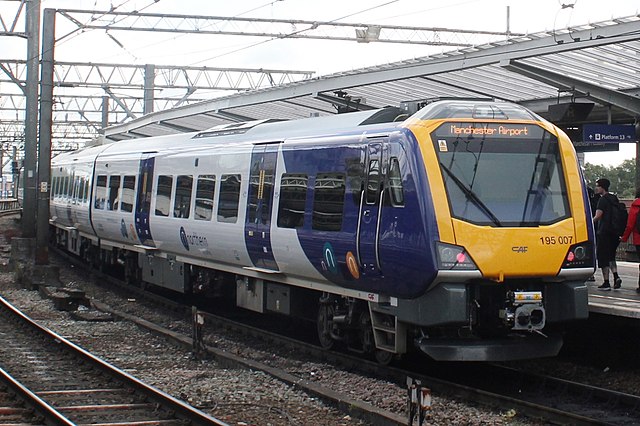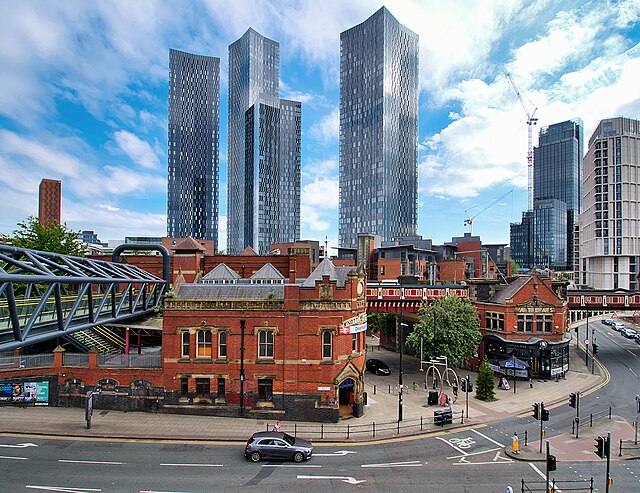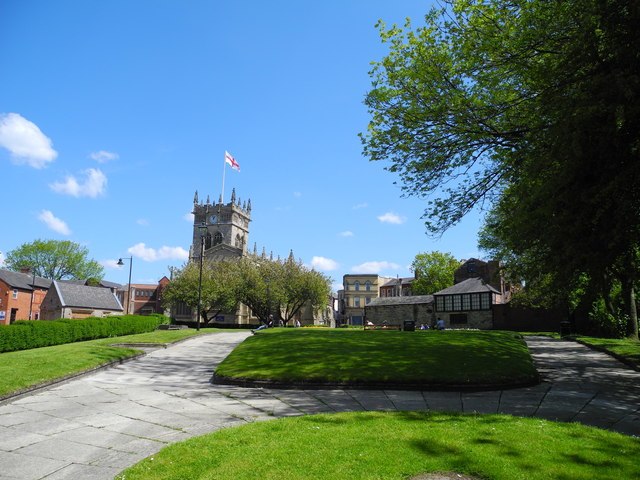Transport for Greater Manchester
Transport for Greater Manchester (TfGM) is a local government body responsible for co-ordinating transport services throughout Greater Manchester in North West England. It is an executive arm of the Greater Manchester Combined Authority (GMCA), the city region's administrative authority. The strategies and policies of Transport for Greater Manchester are set by the GMCA and its Greater Manchester Transport Committee (GMTC). The committee is made up of 33 councillors appointed from the ten Greater Manchester boroughs, as well as the Mayor of Greater Manchester.
Manchester Metrolink TfGM owns Greater Manchester's light rail system, which includes over 64 miles of track and 99 stops across seven of the ten Greater Manchester boroughs.
Free bus TfGM owns the free bus service around Manchester city centre.
Commuter rail services Commuter rail services are provided by train operating companies (TOCs). TfGM subsidises local rail services and helps to fund station improvements across Greater Manchester.
Bus services Bus services in Greater Manchester are deregulated. TfGM owns and maintains bus stations, stops & shelters. It implements the System One multi-operator and multi-modal travelcards, and subsidises some fares, however this is being reversed by the new Bee Network, with the network being brought back under local control, with TfGM appointing franchisees to operate the services.
Greater Manchester is a ceremonial county in North West England. It borders Lancashire to the north, Derbyshire and West Yorkshire to the east, Cheshire to the south, and Merseyside to the west. Its largest settlement is the city of Manchester.
Image: Tower Blocks over Knott Mill, geograph 6866152 by David Dixon
Image: Peel Monument August 2022 (1)
Image: Church Gardens, Wigan geograph.org.uk 3578326
Former weavers' cottages in Wardle. An increase in domestic cloth production, and textile manufacture during the Industrial Revolution is attributed to a population boom in the area.








